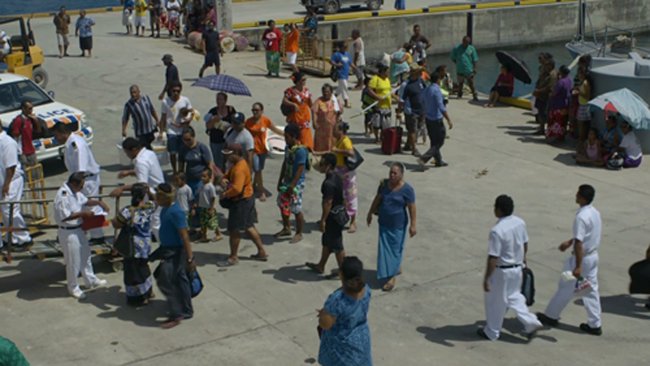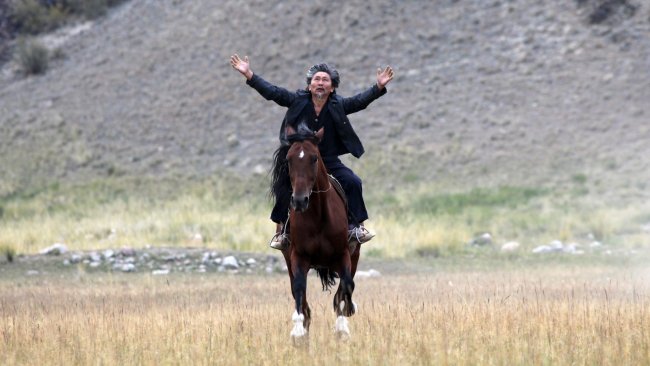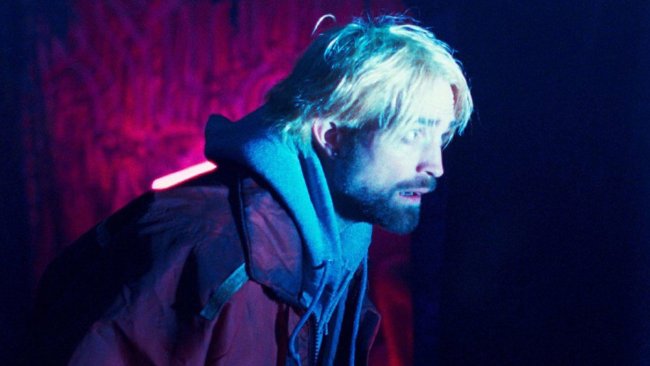For the Time Being
[…] The repetition of the same, in the boredom of long summer afternoons, renders the slight variations more perceptible. The slow pace of «For the Time Being» results in an amazing awakening of the senses.
[…] Salka Tiziana so builds a dialectic of small conflicts, through which we can feel how territory is wider than property…
[…] Suspension and expansion, they are two qualities of a fragile moment – one year ago or now, in the present memory, at the time of watching the film, and of remembering the film.
Text: Giuseppe Di Salvatore

It is snowing. Nothing could be farther from what I see on the screen: the scorching heat of internal Spain in summer. But the images of For the Time Being are not exotic to me, for they share the silence with the snow, and the immobility of extreme temperatures. I have the impression of hearing Federico Mompou’s Musica callada in my ears. The silence resounds, letting the sounds resonate: the minimal sound of the wind, of dry grass being trampled, of a car moving slowly across vast landscapes. Salka Tiziana’s camera lingers on deserted landscapes, which are embroidered by movements describing thin lines, or explored by long travellings. The film calmly establishes the coordinates of a place, a realm that will then be haunted by the film itself, which will then wander through the Place.
I ask myself whether it makes sense to put words on a film that has almost no dialogue. One should find non-words for it, liberating non-words that can express the wordless experience of watching the film. Or one should try to repeat some words, again and again, until the words themselves undress, take their meaning off. The silence resounds, lets the sounds resonate, the minimal sound of the wind, of ephemeral birds in the leaves. The film calmly establishes the coordinates of a place, a realm that will then be haunted by the film itself, that will then explore the Place, even challenge it.
The repetition of the same, in the boredom of long summer afternoons, renders the slight variations more perceptible. The slow pace of For the Time Being results in an amazing awakening of the senses. Details, gestures, small sounds… we become sensitive to them, we discover their connections, thanks also to a refined and allusive editing. The Place is dominated by a manor house; the vastness around it becomes a field of apparently fleeting happenings. I cannot but relive my feelings as a child in the South again, for in the film a child’s perspective somehow prevails, even when we follow adult figures. This point of view will accompany my perception of the film from the beginning to its end. Feelings and not meanings are what I have, while the credits flow.
*
Was really the wind singing? There certainly were cicadas. I come back to For the Time Being some days after the first view, I come back to the writing and to repeating – and variating: the Place is dominated by a manor house; the vastness around it is the realm of the matriarch of the house. Meanings start to take shape. The matriarch actually shines with patriarchal weightiness. The movements in the landscape are escape attempts. The daughter prefers to leave the house as often as possible; the daughter-in-law reluctantly fits to the house; the grandchild will leave the house alone. Does he flee or explore? Both of them – this is the secret truth of the film. During his long hikes, we discover that even water flows away from the house – its swimming pool has emptied. The child will end his walk on the bridge, at the border of the property, looking at the water, at two couples on a small boat, a signal of another world, outside of the family web. Motherhood and the manor house are centripetal forces, in the absence of fathers, which still reiterate their terrestrial power. The escape attempts in the landscape, instead, describe a breaking movement, a centrifugal force. A pot falls and breaks, a storm will come, a sound hunter (?) registers the movement of animals. The Place is also haunted by the uncontrolled. Salka Tiziana so builds a dialectic of small conflicts, through which we can feel how territory is wider than property… This is just a possible constellation of meanings – yet, this film does not really need it.
The territory is a chance for the family to sink and evaporate into the vastness of the Place. The Place is dominated by a manor house; the vastness around becomes a field of apparently fleeting happenings. The silence resounds, lets the sounds resonate, the minimal sound of the wind, of barking dogs, registering the minimal movements within the territory. The Place is haunted by the uncontrolled, a subtle anarchic thread… This time, the repetitions – and variations – start speaking of time; the words undress, liberate themselves from temporal orientation, and the non-words will express the wordless experience of the time of For the Time Being. Tal día hizo un año is the Spanish title of the film: a certain day one year ago – translated literally (this Spanish idiomatic expression would be difficult to translate). It is slightly different from the English version: memory expands time, different from the suspension of the “time being”, for the moment. Suspension and expansion, they are two qualities of a fragile moment – one year ago or now, in the present memory, at the time of watching the film, and of remembering the film. The suspension of an immobile territory, under the captivity of property; the expansion of anarchic movements, in a territory vastly unknown, bigger than any ordered place: two sides of the same (suspended-expanded) moment.
The fragility of time, in its suspension and expansion, is the experience of For the Time Being – Tal día hizo un año. This is my experience anyway – where family has the vertiginous chance to sink, and adventure can begin. Not tomorrow, but today.
This article contains a third-party video. If you would like to watch the video, please adjust your settings.
Watch
Online streaming at the Solothurner Filmtage 2021
Info
For the Time Being | Film | Salka Tiziana | CH-DE 2020 | 71’ | Solothurner Filmtage 2021
First published: January 29, 2021



